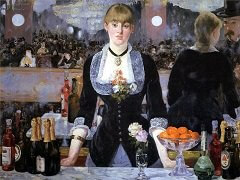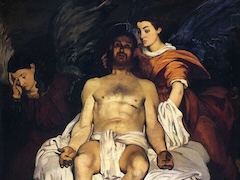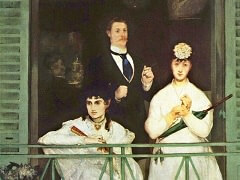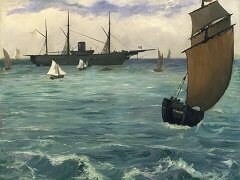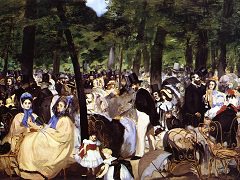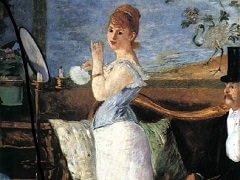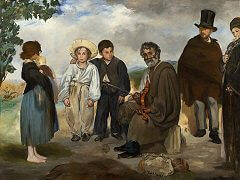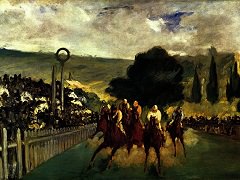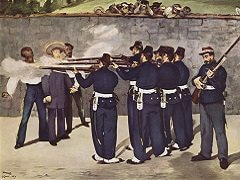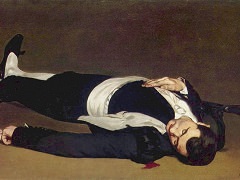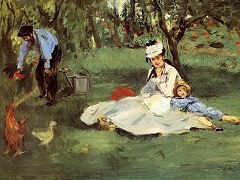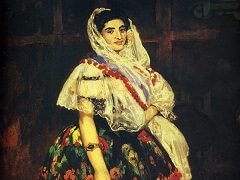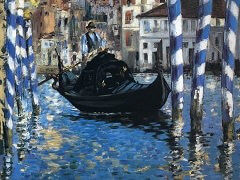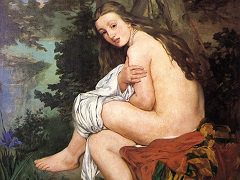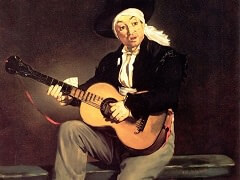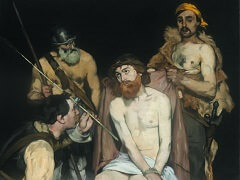Le Suicide, 1887 by Édouard Manet
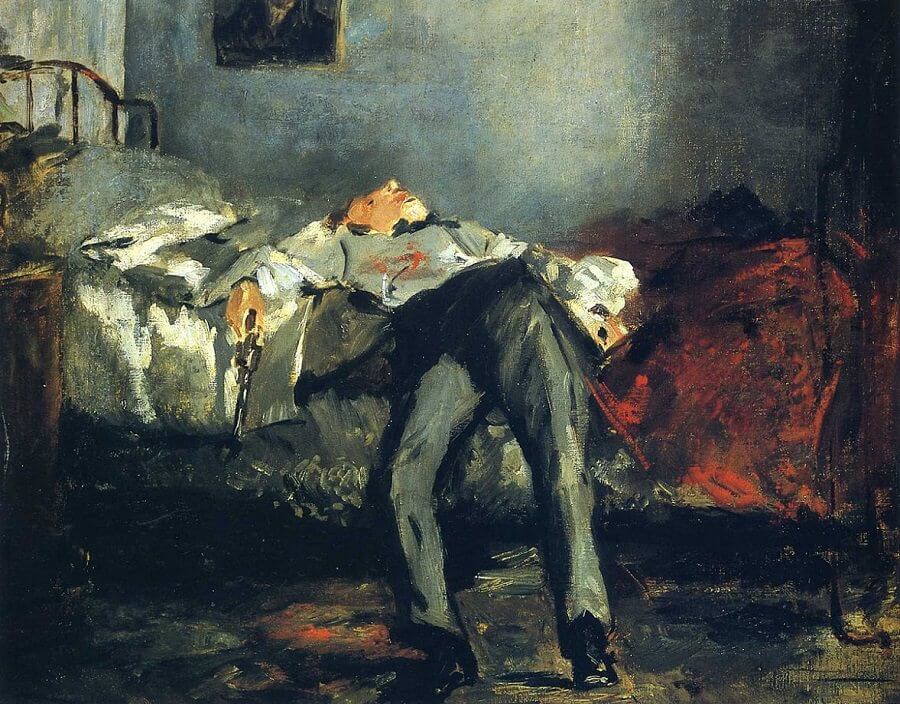
Le Suicide was painted by Édouard Manet During his final years (1877-1881).
Despite the curious theme of the painting, it exists as a marginalized work in Manet scholarship. The iconography is puzzling - both the identity of the man and the circumstances surrounding this primal act of self-inflicted torture has eluded scholars. Death is an occasional theme in Manet's oeuvre, but the vivid evocation of madness and desolation is atypical. The graphic brutality pictured in Le Suicide has earned the painting the superlative, 'the grimmest and most realistic death image Manet ever created.'
The 'grim' nature of the work resides in the grisly details - the vast puddle of blood at the foot of the bed and on the victim's white shirt, his dinner jacket strewn upon the floor, and his lifeless hand weighed down by the large revolver. His gaping mouth seems to gasp for air, an alarming detail that suggests that the victim may not have successfully completed the act. He currently lies in an agonizing physical and spiritual state of limbo. Through the haphazard brushwork and the contorted position of the victim, Manet heightens the experiential nature of the masochistic act; the painting appears as a filmic episode unfolding before our eyes, forcing us to ponder, minute by minute, the circumstances that drove this man to attempt self-annihilation.
Despite the macabre iconography, scholars have gravitated toward the formal qualities of Le Suicide. As such, scholars have viewed the work in the context of Manet's impressionist experimentation with light effects and color during the mid to late 1870's. Taking their cue from Manet's early biographer, Adolphe Tabarant, who flippantly characterized Le Suicide, 'merely an incident of the palette,' scholars have dismissed the painting as an emotionally detached study of light and color.

